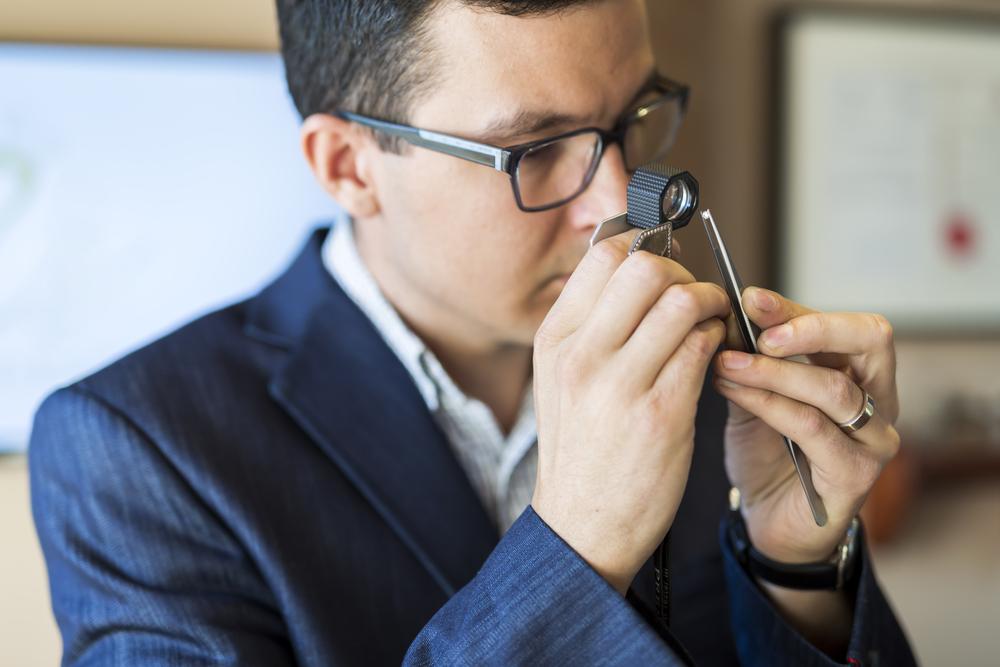Latest from Dominion
How to Tell If A Diamond is Real

Do you have loose stones that are supposed to be diamonds, but you’re not sure? Have you bought diamonds at a price that seemed too good to be true? If you received the stones as a gift or inheritance, you might wonder if they are real. Here are some tips for identifying real diamonds if they don’t have a certificate from the Gemological Institute of America or American Gemological Society confirming they are legitimate.
Real vs. Fake Diamonds
Using the term “real” may be a bit misleading as there are different diamond types. Lab-created or synthetic diamonds are technically real, albeit not natural. The stones grown in a laboratory have the same chemical properties as mined stones. However, simulated, also known as fake diamonds, look like the real thing but have different properties.
Diamonds come in an array of colors, from brown and yellow to colorless. The less color the stone has when it sparkles, the more valuable it is.
Cubic zirconia is the most common diamond simulant. Moissanite is predominantly lab-created, as it is incredibly rare, naturally. While it has brilliance and clarity that rivals authentic diamonds, its composition is very different.
Float Test
While not the most conclusive test for loose stones, the water test is one of the easiest ways to determine whether your diamond is real. Fill a drinking glass about three-quarters to the top with water and gently drop the stone into the glass. Diamonds have a high density, so a fake will float just below or at the surface. If it’s real, it will likely sink to or near the bottom.
Fire Test
Extreme heat can test the strength and quality of your diamond. Heat the loose gemstone with a lighter for about 40 seconds, and immediately place it into a glass of cold water. If the stone shatters, it was not real.
Fog Test
This test can be done with a loose stone or one already set. Hold it between two fingers and breathe on it to fog the surface. Diamonds conduct heat effectively; if the fog clears almost immediately, it’s a real diamond. If it takes several seconds, it’s likely a fake.
Refractivity
When light hits the angled surfaces on the lower part of the diamond, it bounces and refracts to the top, resulting in a pleasing sparkling effect. The white light you see refers to its brilliance. Fake diamonds have little to no brilliance.
Setting/Mount
If your stone is already set, look inside the band. A “C.Z.” engraved or stamped on it indicates it’s not an authentic diamond. Due to the value of a real diamond, the settings are typically high-quality. Check the center of the ring for markings. If it is gold, the band may have 18K, 14K or 10K on the inside. If it’s platinum, it may say PT or Plat. Numbers such as 950, 900, 770, and 585 also indicate gold or platinum. Although not conclusive, it increases the likelihood that the stone is a real diamond.
Diamond Appraisal
The tests that you can do at home only provide indications as to whether a diamond is real or fake. As there are several synthetic gemstones currently available, these tests are not always conclusive. A diamond professional has tools and training that enable them to determine if the stones you have are authentic.
If you want to ensure your jewelry, a valuation from our appraisal experts details the characteristics of your piece and establishes its fair market value. The report includes color photographs, as well as a narrative that documents their analysis. It addresses gemstone weight and quality, visible flaws and markings, the precious metal weight, and information about the setting, such as design and materials. The overall craftsmanship is also evaluated to obtain a retail value of the piece.
Dominion Jewelers has more than 30 years serving Northern Virginia and the Washington, D.C., area. Contact us today to schedule a time to visit our showroom and discuss the appraisal of your favorite diamond piece with a jewelry specialist.
